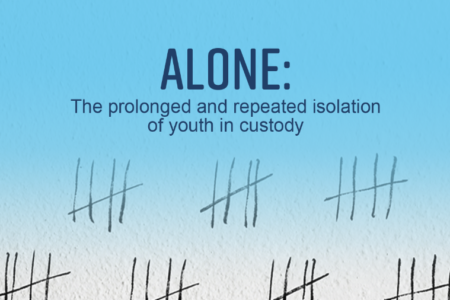Putting the Carbon Tax to Better Use
“There are risks and costs to a program of action. But they are far less than the long-range risks and costs of comfortable inaction.” – John F. Kennedy
A vast majority of you love the carbon tax; your federal and provincial governments don’t. And ideas abound about its use and abuse.
Metro Vancouver mayors have proposed a carbon tax reallocation or another regional carbon tax to fund public transit. Others have suggested it be used for funding environmentally friendly technology, greening buildings, and even building bicycle paths.
Those few opposed to the carbon tax believe it is an evil plot by left-leaning, tree hugging, environmental wing-nuts to fleece their wallets.
Is it possible to get a price on carbon right and make everyone happy? Probably not, but evidence is piling up that a carbon tax can save lives, save the planet, and save the economy so maybe it’s time to try.
Polling research by the Pembina Institute, Clean Energy Canada and the Pacific Institute for Climate Solutions shows that 69 per cent of British Columbians think pricing carbon is a priority. You’re even more enthusiastic about fighting climate change with 89 per cent of you believing that hitting climate targets is a priority.
The latest numbers from Statistics Canada support last year’s report by the national green economy think tank Sustainable Prosperity that found B.C.’s carbon tax was a real environmental and economic success after six years.
Climate change is “crisis of our generation”
So why is Christy Clark’s government sticking to its promise to freeze the tax at $30 per tonne of CO2 equivalent for five years despite evidence that it has reduced emissions? And why does Prime Minister Stephen Harper repeatedly claim that a carbon tax would “destroy jobs and growth” when there is no proof to sustain that line?
Their stubbornness is particularly puzzling in light of pronouncements in the International Monetary Fund’s newest book Getting Energy Prices Right: From Principle to Practice. It provides estimates of tax levels needed to incorporate environmental costs in the prices of coal, natural gas, gasoline, and diesel for 156 countries.
The Washington-based financial institution estimates that such policies can globally reduce fossil fuel deaths by 63 percent, reduce carbon emissions by 23 percent, and raise revenues by 2.6 of percent of gross domestic product.
IMF managing director Christine Lagarde calls the book a toolkit to help countries ensure they are pricing energy responsibly. She states that “substantially higher fuel prices are needed – and indeed unavoidable – to deal with mounting environmental challenges.”
“According to the World Health Organization, outdoor air pollution alone causes 3.2 million premature deaths a year,” Lagarde told the Center for Global Development last month. “Meanwhile, relentless growth in vehicle traffic results in ever more productive hours lost in the grind of daily congestion.”
She paints climate change as “one of the greatest crises facing our generation and our century. It is also the issue upon which future generations will judge us.”
Social cost of carbon could be $900/tonne
Both American and Canadian federal governments have assessed climate regulation through the lens of a figure known as the social cost of carbon (SCC). It is defined as an estimate of the monetized damages – such as property damage or changes to agricultural productivity and human health – associated with increased carbon emissions.
Environment Canada’s assessment of the Passenger Automobile and Light Truck Greenhouse Gas Emission Regulationsput a social cost of carbon at $28.44/tonne of CO2 in 2012 to justify the benefits of new fuel efficiency standards. The agency’s review foresaw the SCC going up to $61.85 in 2056, increasing at a given percentage each year associated with the expected growth in damages.
However the review concluded that a value of $112.37/tonne in 2012 up to $243.96 in 2056 could also be considered reasonable.
A year ago the U.S. government increased its estimate of the social cost of carbon to $36/tonne when it introduced new energy efficiency standards for microwaves. The National Resources Defense Council believe the government has underestimated the extent of climate-related damages by failing to factor in worst-case scenarios such as drought, storm surges, lost productivity from power outages and massive ecosystem changes like ocean acidification. The group estimates the true environmental and social cost of greenhouse gas emissions could be as high as $252/tonne.
In a 2012 study with colleague Elizabeth Stanton, economist Frank Ackerman found that including the most important climate risks could raise the damages to almost $900 per ton of carbon dioxide.
Getting the tax regime right for Canadian fossil fuels will undeniably come as a shock to the both consumers and industry. The IMF book uses U.S. currency calculations, which means numbers in Canadian dollars are not precise, but they roughly translate to a 52 per cent increase in the taxes applied to both gasoline and diesel.
The IMF suggests Canadian gasoline should be taxed at about 55 centsUS a litre instead of the current 36 cents, and road diesel at about 64 cents per litre, instead of the current 42 cents. Globally, Canada is near the bottom on the scale of taxation levels for gasoline among industrialized nations. It taxes gas higher than the U.S., but generally well below taxation levels applied in Europe and Japan.
According to the IMF, there should be a $4.90 US (about $5.34 Cdn) per gigajoule tax on coal, where there is none now, and natural gas should be taxed at $2.20 US ($2.39 Cdn) per gigajoule, in place of the small subsidy that currently exists. A gigajoule is a unit of energy.
The IMF calculates phasing in the carbon taxes to the levels it suggests would increase Canada’s GDP by 1.4 per cent, reduce carbon emissions by 15 per cent and diminish deaths from air pollution by 25 per cent, the latter mostly from reducing coal use.
Carbon tax has reduced fuel use
Since the carbon tax was implemented in July 2008, fuel use in B.C. has dropped by 16 per cent, while it’s risen by 3 per cent in the rest of Canada (counting all fuels covered by the tax).
Per capita greenhouse gas emissions decreased by 10 per cent in BC and 1 per cent in the rest of the country between 2008 and 2011. In fact, while per capita GHG emissions increased by 3.9 per cent in 2011 for the rest of Canada; they decreased 2.4 per cent in BC.
“Each year the evidence becomes stronger and stronger that the carbon tax is driving environmental gains,” says Stewart Elgie, an economics professor at the University of Ottawa and head of Sustainable Prosperity.
The carbon tax appears not to have affected the BC economy: In 2008-11, BC’s GDP per capita has kept pace or outpaced with the rest of Canada. The overall decrease in per capita GDP was 0.15 per cent compared to 0.23 per cent for the rest of Canada. An analysis by the Pacific Institute for Climate Solutions released last month showed B.C’s carbon tax has had no overall negative impact on the province’s agriculture sector.
“There’s very little evidence – zero evidence – that carbon taxing is related to jobs,” says Brandon Schaufele, an assistant professor at the University of Western Ontario, who co-authored the PICS report.
Carbon tax revenues in B.C. for the 2012/13 fiscal year were $1,120 million. The largest portion of the revenue went to corporate ($450 million) and small business ($261 million) income tax reductions.
Reduction of 5 per cent in the first two personal income tax rates amounted to $235 million while $67 million funded the Northern and Rural Homeowner Benefit of $200.
The BC Low Income Climate Action Tax Credit used $195 million of the carbon tax revenue, while the BC Seniors’ Home Renovation Tax Credit used $27 million and the Children’s Fitness Credit and Children’s Arts Credit used $9 million.
According to the provincial government’s Budget and Fiscal Plan, the estimated reduction in provincial revenues for 2012/13 as a result of the designated revenue measures is $546 million for the personal tax measures and $834 million for the business tax measures, for a total reduction of $1,380 million. Thus the carbon tax more than meets revenue neutrality.
Replace carbon tax with FAD
If the policy purpose of a price on carbon is to change behaviour and discourage overuse of environmentally harmful energy products, perhaps it is time to consider a proposal by the Coronado, California-based Citizens’ Climate Lobby which has more than 200 volunteer chapters in the U.S., Canada and worldwide.
The group advocates calling the price on carbon a fee rather than a tax. The CCL argues that the primary purpose of a tax is to raise revenue which invariably grows the size of government. On the other hand, a fee recovers the cost of providing a service from a beneficiary, including the damage that carbon is doing to our climate, oceans, and health.
The CCL then proposes that 100 per cent of the fee be returned to households as a dividend either by cheque or direct deposit on a monthly basis. Every household would receive its share based on the number of adults (over 18) living there with dependent children (under 18 and a maximum of two) receiving half shares.
This “fee-and-dividend” (FAD) keeps the system revenue neutral and requires no changes to the tax code or additional government expenditures.
A study commissioned by CCL and released by Regional Economic Models, Inc. (REMI) in June assessed the impact of a $10 fee per ton of CO2 content of fossil fuels, increasing by $10 a ton each year. The fee would be collected at the earliest point of entry into the economy – well, mine or port. Border tariffs would be applied to the carbon content of imports and credits given to exports.
Because not everyone uses the same amount of carbon, the study found that about 66 per cent of American households would earn back from the dividend as much or more than they pay in increased costs. Each year the carbon fee goes up, the dividend goes up as well.
More importantly the study found that by 2025:
- 2.2 million jobs are added to the economy.
- Carbon emissions decline by 33 per cent after 10 years.
- 13,000 lives are saved annually due to reduced air pollution.
- The annual dividend for a family of four (2 adults, 2 children) would be $3,480.
- The greatest employment gains would be seen in health and social assistance and retail trade.
- The national GDP is up by $80 billion (0.5 per cent) annually.
- Real income per capita is up $500 (1 per cent) after 10 years.
Business as usual is unsustainable
Geoscientist J. David Hughes says energy policy and planning is built around the assumption that things will continue as they have gone for the past few decades.
“Do we press on with business as usual at all costs until we hit the wall on energy, or do we recognize the unsustainability of this paradigm and adopt a new paradigm of living within the means of our energy options?” he asks in an essay in the book Carbon Shift: How the Twin Crises of Oil Depletion and Climate Change Will Define the Future.
A price on carbon is simple, fair, effective, justified, efficient, and politically neutral. It is the most powerful weapon in our policy arsenal in the fight against climate change. It corrects the largest market failure of our energy system – the social and environmental cost of carbon. It should be viewed as a benefit of reducing greenhouse gas emissions now and thereby avoiding costs in the future.
The increasingly hard-to-miss evidence of climatic change – forest fires, drought, flooding, methane releases from permafrost melting, species extinction, rising sea levels, human health threats, ocean acidification, refugee migration, and water scarcity – cries out for innovative solutions. The impact of inaction on climate change will be far worse than the cost of an ambitious climate policy.
Would the carbon tax by another name and a direct monthly benefit to households smell as sweet and gain even greater love? The Citizens’ Climate Lobby believes the answer is yes and the facts seem to support its claim.
Climate change is a narrative that stretches moments, months, and maybe even millennia into the future. But we live in the now and the CCL believes now is the time for governments to get with a new program. Smart use of the revenues generated by a carbon tax may be even more important than the carbon price itself.
Michael Jessen is a Nelson-based energy consultant and has written about environmental issues for more than two decades. He is a member of his local Citizens Climate Lobby chapter and can be reached by email at zerowaste@shaw.ca
























